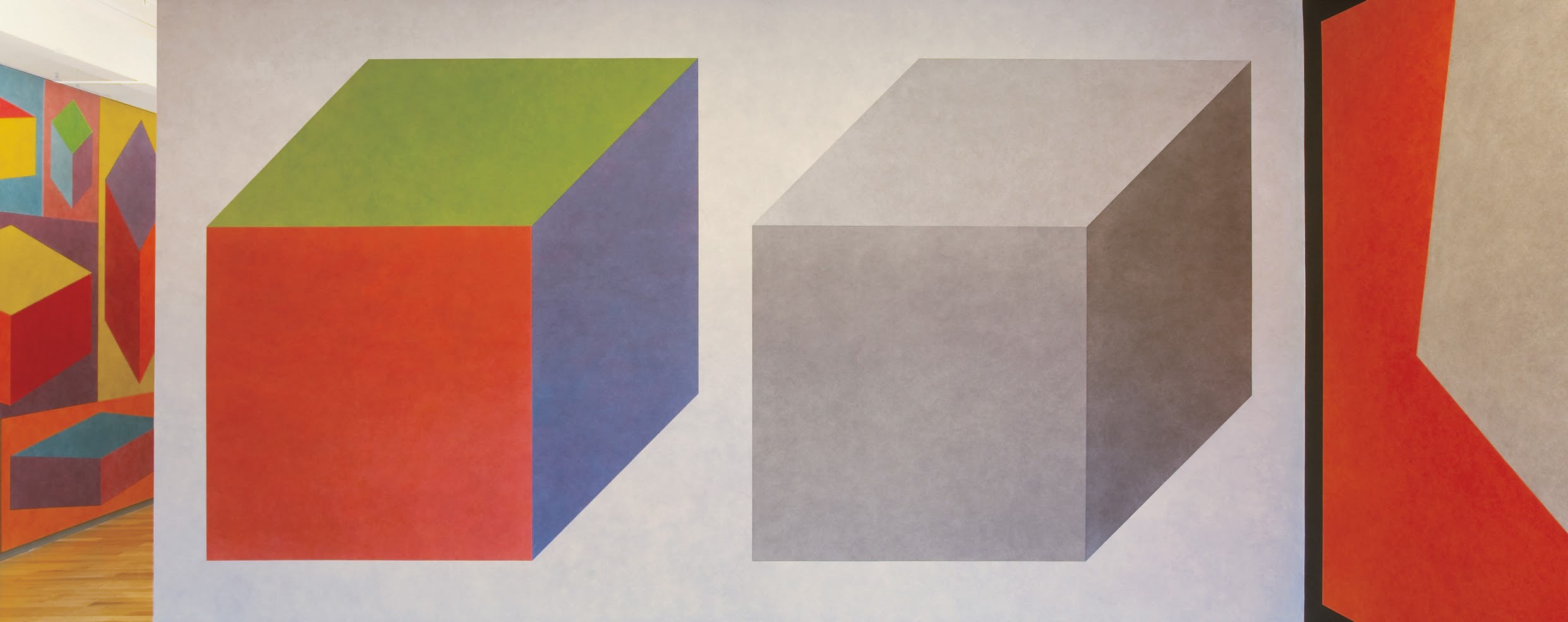Sol LeWitt
- Sol LeWitt
Double Drawing. Right: Isometric Figure (Cube) with progressively darker graduations of gray on each of three planes; Left: Isometric figure with red, yellow, and blue superimposed progressively on each of the three planes. The background is gray.
March 1993
Color ink wash
LeWitt Collection, Chester, Connecticut
First Installation
Addison Gallery of American Art, Phillips Academy, Andover
First Drawn By
John Crowley, Christina Hejtmanek, Addison Parks, Anthony Sansotta, Mark Snow, Eric Ziemann
MASS MoCA Building 7
Second Floor
Sol LeWitt’s use of the cube was fundamental to his early conceptual thesis. The artist, who sought to reduce art to the most basic forms, saw the cube as the least emotive of all shapes. In 1973, he began the project Variations of Incomplete Open Cubes in which he systematically subtracted parts from an open cube, representing each possible variation. His interest in the cube extended beyond three-dimensional works: he created two-dimensional drawings of each of the incomplete open-cube variations. Similar two-dimensional representations of three-dimensional objects later resurfaced in LeWitt’s wall drawings.
In the early 1990s, LeWitt began exploring floating isometric shapes in many of his ink wash wall drawings. Wall Drawing 415, one of the earliest examples of these drawings, depicts two floating cubes. The rendering of these cubes, while employing a method of perspective, does not suggest spatial recession. Instead of drafting his forms using linear perspective, LeWitt drafts them isometrically, a technique in which all angles of the form appear equal, suggesting volume but not the illusion of depth.


